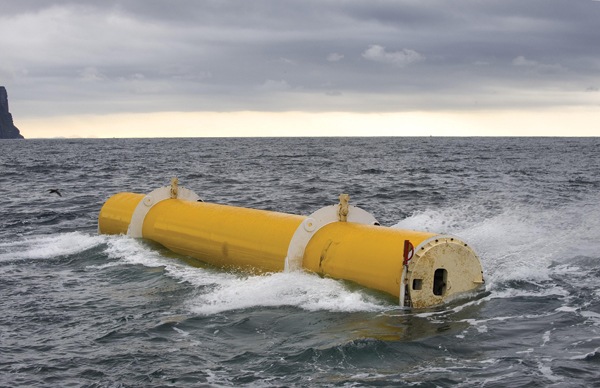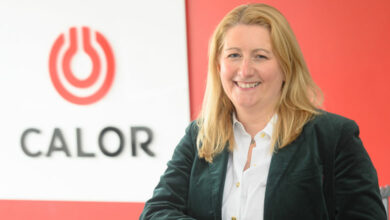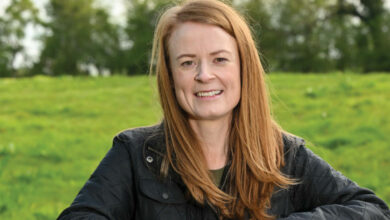Making waves with electricity
Northern Ireland pioneered marine power and now stands to gain a leading place as it grows, Professor Trevor Whittaker tells Peter Cheney.
Having led the way in marine power, Northern Ireland could become the hub for making electricity from the seas, according to the head of Queen’s University’s renewable energy programme.
Professor Trevor Whittaker has been researching marine energy for 30 years and thinks the province is well-placed as the industry develops, due to its location and expertise. Whittaker is professor of coastal engineering and leads the Environmental Engineering Research Centre.
Marine energy comes in three forms: wave, tidal stream and tidal barrages. The first two are dominant while barrages, where an estuary is blocked off, are much less common.
While the world has many windswept islands, the British Isles have a distinct advantage because of their location. “They’re on the eastern seaboard of the North Atlantic and our predominant weather systems, which are the depressions, travel from the south west,” Whittaker explains. “Energy in wind which circulates around the depressions is transferred into the water in the form of waves.”
The isles benefit from a good wind velocity, a long fetch distance i.e. over which the wind blows, and depressions lasting for several days. Scotland and Ireland are naturally helped by their greater exposure to the elements.
Wave potential is also strong off the Pacific coasts of North and South America, and that ocean’s islands, as well as Australia, New Zealand and the Falklands. No seas are too extreme but generators need a stronger structure in
order to survive those conditions.
For its part, Northern Ireland is sheltered by Donegal, which of course is more northern geographically. This limits its wave energy but there is a very good climate for tidal currents running into the Irish Sea.
“The tidal resource for Ireland is on the Northern Ireland coast,” he remarks. SeaGen’s arrival in the narrows of Strangford Lough put the province on the map for that technology; the university monitors the plant’s environment impact.
Whittaker contends that Strangford is “probably the best site in the world for demonstrating and developing tidal current”. Not only does it have a good current, it is sheltered from the sea’s waves and is “very accessible” compared to other sites i.e. just a one hour drive from the nearest airport. Torr Head, near Ballycastle, and the Copeland Islands, off Donaghadee, are two other promising sites, and the County Antrim site could provide “tens of megawatts” of capacity.
Growth
Scotland is, though, ahead of Northern Ireland in wave power as it is providing more financial support to the sector: £13 million through its Wave and Tidal Energy Support Scheme and the £10 million Saltire Prize. Across the UK, £160 million has been allocated from the public purse since 1999.
Scots see marine renewables as a replacement for their decreasing North Sea oil. The country is home to the three market leaders – Pelamis, Aquamarine and WaveGen – and four prototype devices, but three of these originated in Belfast.
At Queen’s, Professor Allan Wells invented the Wells turbine in 1976. Self-rectifying, it turns in one direction and is therefore used in oscillating water columns, where water is sucked in to drive air out. An early prototype saw such a column built into a whistle buoy, which captured the power as it was bobbed up and down by waves.
Whittaker did a final year project on the turbine and was then involved more closely as the research developed. A 75KW oscillating water column was built over a rock gully in Islay, north of Rathlin, in 1991. This, the UK’s first grid- connected wave power plant, operated until 1999 and was replaced nearby by Limpet, the land-installed marine- powered energy transformer.
Built to provide 500KW, although it later produced 200KW due to its location, Limpet is still in operation and brings water into a chamber, which acts as the column. It currently tests commercial turbines.
He explains that the main problem with fixed oscillation water column systems like Limpet is that the structure, designed to survive infrequent extreme waves, is both expensive and under-used for much of the time. This led to Oyster’s development.
The technology for Oyster was developed at Queen’s from 2003 onwards and the first successful generator was installed off the Orkneys in August 2009. With a 315KW capacity, the Oyster device is operated by Aquamarine and was connected to the grid by Scottish First Minister Alex Salmond last November.
Researchers at the university are also “keeping tabs” on Ireland and its
Sea Gen’s installation, May 2008.
prospects. The Republic’s Marine Institute runs a 37 hectare testing site in Galway Bay for quarter-scale prototypes and is now planning a full-scale research station off Belmullet, on Achill Island.
Industry
“It’s potentially a huge industry but it will grow quite slowly in the initial stages,” he notes. However, Whittaker warns that it is “very dependent” on costs and alternative sources of power, including oil and its availability: “It applies to all renewables. We wouldn’t use renewables if there wasn’t a shortage of oil and there wasn’t a pollution issue.”
While fossil fuels release energy stored for millions of years, renewable sources such as marine “have to extract the energy from the environment around them in real- time.”
Locally, Queen’s marine work has been endorsed by government ministers, including Edwin Poots who has visited the lab. Looking ahead, Whittaker foresees the main benefits for Northern Ireland coming as the support industry for wave and tidal power develops. Growth areas could include servicing, consultancy, resource assessment, environmental monitoring, design and manufacturing.
“Northern Ireland has really a very important part to play in all of this because the marine renewables and wave and tidal or even offshore wind is all happening around us,” Whittaker reflects. “Not only does Northern Ireland plc have a lot of contribute to all of this but obviously the universities are in there by training the young people in coastal and marine engineering.”
He currently has 14 research students working on the technology, as well as projects undertaken by those on undergraduate and MSc courses.
Asked for the main difficulty in installing marine plants, he points to the cost. Pinning the equipment to the sea bed is expensive, with Oyster’s installation costing £3 million. The whole process needs to be made more cost-effective, down to one-sixth of that sum, without using large specialist plant.
“The message for local politicians is Northern Ireland could potentially be the hub of a lot of this development and, like Scotland, Northern Ireland has to get its act together and provide the financial support that SMEs need to come here to develop their technology.”






